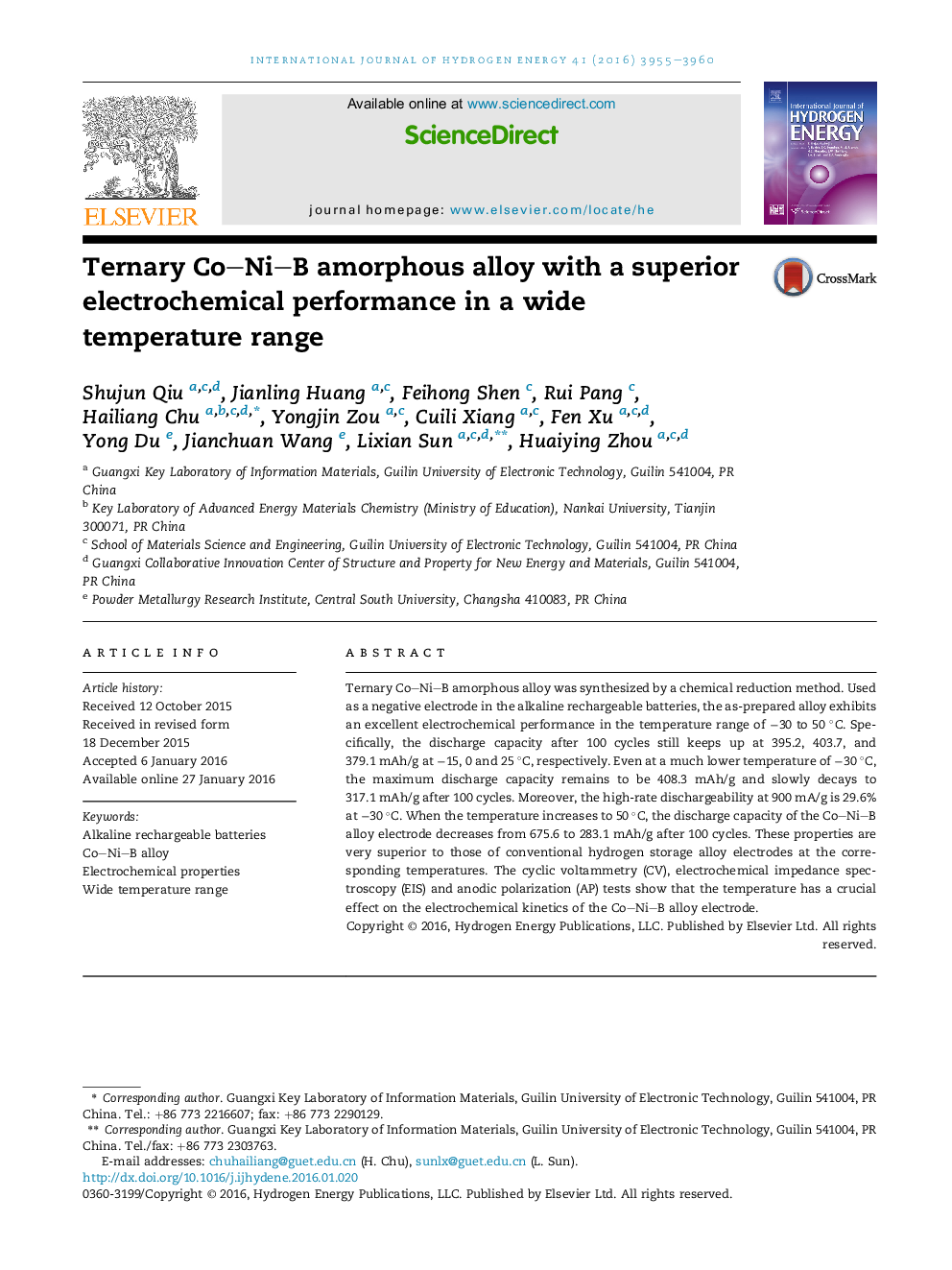| کد مقاله | کد نشریه | سال انتشار | مقاله انگلیسی | نسخه تمام متن |
|---|---|---|---|---|
| 1277925 | 1497419 | 2016 | 6 صفحه PDF | دانلود رایگان |

• Co–Ni–B alloy was synthesized by a chemical reduction method.
• Co–Ni–B alloy has an excellent electrochemical performance over −30 to 50 °C.
• C100 still remains above 390 mAh/g at −15, 0, and 25 °C.
• Even at −30 °C, Cmax could reach a value of 408.3 mAh/g.
Ternary Co–Ni–B amorphous alloy was synthesized by a chemical reduction method. Used as a negative electrode in the alkaline rechargeable batteries, the as-prepared alloy exhibits an excellent electrochemical performance in the temperature range of −30 to 50 °C. Specifically, the discharge capacity after 100 cycles still keeps up at 395.2, 403.7, and 379.1 mAh/g at −15, 0 and 25 °C, respectively. Even at a much lower temperature of −30 °C, the maximum discharge capacity remains to be 408.3 mAh/g and slowly decays to 317.1 mAh/g after 100 cycles. Moreover, the high-rate dischargeability at 900 mA/g is 29.6% at −30 °C. When the temperature increases to 50 °C, the discharge capacity of the Co–Ni–B alloy electrode decreases from 675.6 to 283.1 mAh/g after 100 cycles. These properties are very superior to those of conventional hydrogen storage alloy electrodes at the corresponding temperatures. The cyclic voltammetry (CV), electrochemical impedance spectroscopy (EIS) and anodic polarization (AP) tests show that the temperature has a crucial effect on the electrochemical kinetics of the Co–Ni–B alloy electrode.
Ternary Co–Ni–B amorphous alloy exhibits an excellent performance in a wide temperature range. At −30 °C, the maximum discharge capacity still remains at 408.3 mAh/g. When the temperature is increased to 50 °C, the discharge capacity decreases from 675.6 to 283.1 mAh/g after 100 cycles.Figure optionsDownload as PowerPoint slide
Journal: International Journal of Hydrogen Energy - Volume 41, Issue 6, 19 February 2016, Pages 3955–3960